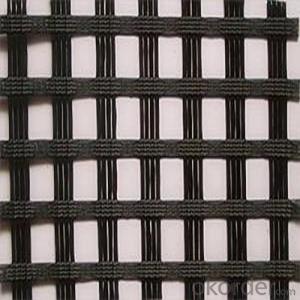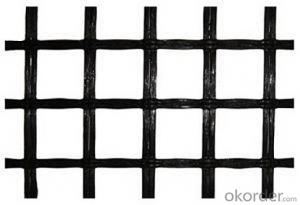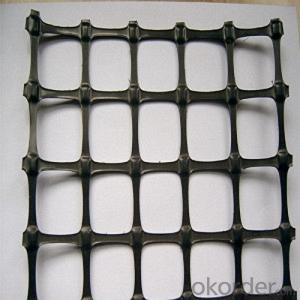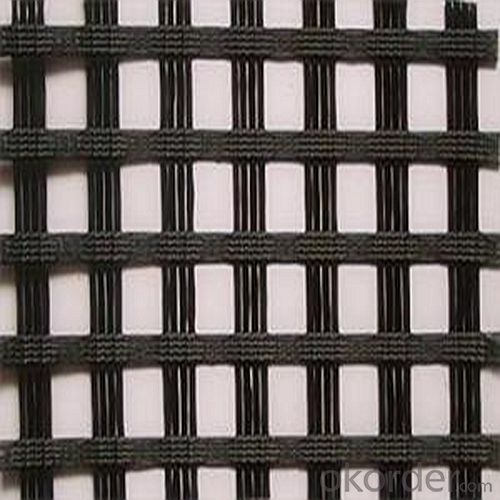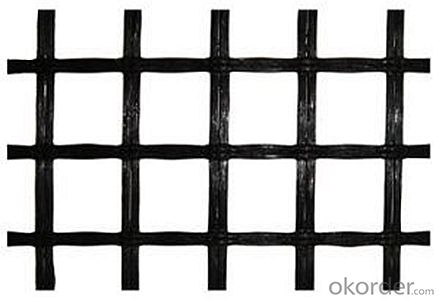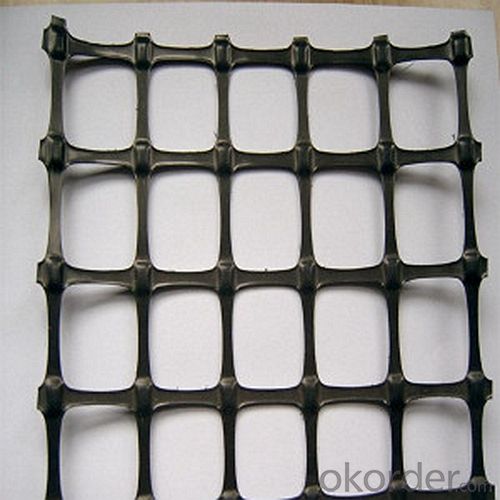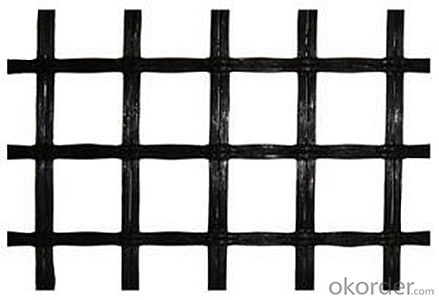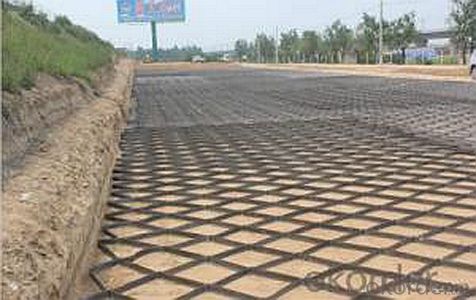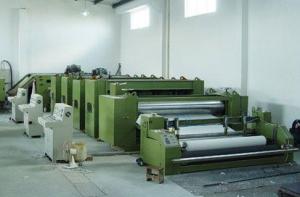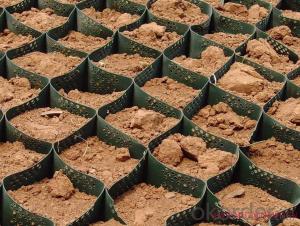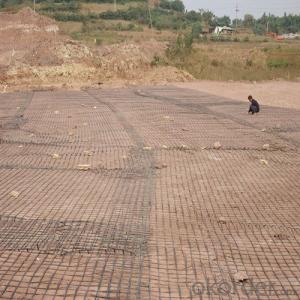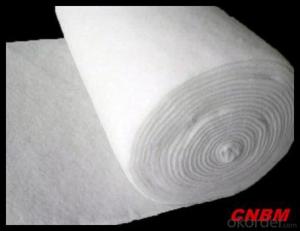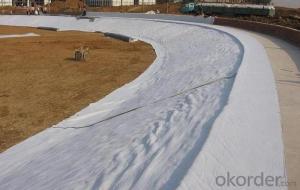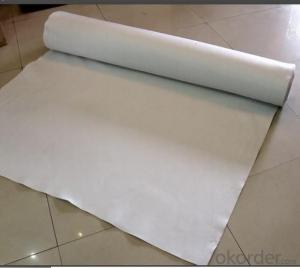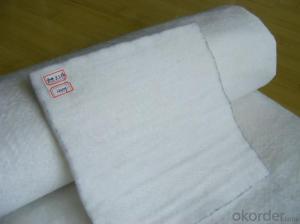8oz Non Woven Geotextile for Fiberglass Geogrid Reinforcement and Separation in Dam and River
- Loading Port:
- China main port
- Payment Terms:
- TT OR LC
- Min Order Qty:
- 1000 m²
- Supply Capability:
- 1000000 m²/month
OKorder Service Pledge
OKorder Financial Service
You Might Also Like
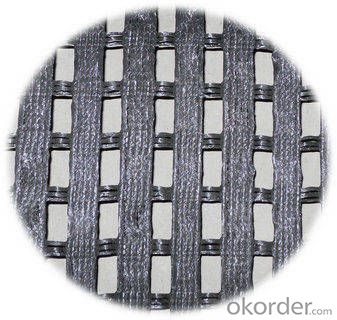
Introduction
Fiberglass Geogrid with CE Certificate
We can produce fiberglass geogrid with tensile strength 30x30kn--300x300kn/m. mesh size
can be 25.4x25.4mm or 12.7x12.7m ,50x50mm.
ITEM
50KNX50KN/M
100KNX100KN/M
MESH SIZE
25.4X25.4MM
25.4X25.4MM
TENSILE STRENGTH
WARP 50KN/M
WARP 100KN/M
WEFT 50KN/M
WEFT 100KN/M
WEIGHT
300G/SQM
500G/SQM
ELONGATION AT BREAK
3%
3%
TENSILE STRENGTH IN KNOT
5KN/M
10KN/M
WIDTH:
1--6M
1--6M
Our Service
Quality assurance
1.On a regular basis or as per your request,we entrust national testing agencies to conduct quality inspections
2. Strictly in accordance with the ISO9001-2008 international quality system standard,we monitor and manage the whole process throughout production,quality testing,and measurement to ensure product quality
3. For quality-related construction delay or substandard construction(except for damage or losses due to customer’s responsibility or irresistible natural disasters),we have refunding,replacement,and repair services.We will respond to customers’ feedbacks on quality issues within 24 hours.
FQR:
Q: What kind of payments does jenor support?
A: T/T, L/C, Cash are accepted.
Q: Do you charge for the samples?
A: Accordeing to our company policy, the samples are free, we only charge the freight fee. And we will return the freight fee during the next order.
Q: Can you produce according to customers' design?
A: Sure, we are professional manufacturer, OEM and ODM are both welcome.
Q: Do you have other products?
A: Yes, please check the pictures:
Packaging & Shipping
Packing: PLASTIC FILM INSIDE, AND WOVEN BAG OUTSIDE
Shipping: About 15 days after receipt the deposit
- Q: Are geotextiles resistant to punctures and tears?
- Yes, geotextiles are designed to be resistant to punctures and tears. They are manufactured using durable materials and undergo rigorous testing to ensure their strength and durability in various applications.
- Q: What are the considerations for geotextile selection in road rehabilitation projects?
- When selecting geotextiles for road rehabilitation projects, there are several important considerations to keep in mind. Firstly, the geotextile should have sufficient strength and durability to withstand the expected loads and stresses in the road environment. It should also be resistant to degradation from environmental factors such as ultraviolet (UV) radiation and chemicals. Another consideration is the desired function of the geotextile. Different types of geotextiles offer various benefits, such as separation, filtration, drainage, or reinforcement. The specific requirements of the road project will determine which function is most important. Additionally, the properties of the soil and subgrade should be considered when selecting a geotextile. The geotextile should be compatible with the soil type and provide the necessary soil stabilization or separation capabilities. It is crucial to assess the project's soil conditions and consult with geotechnical engineers or experts to determine the appropriate geotextile specifications. Lastly, cost-effectiveness is an essential consideration. The selected geotextile should provide the desired performance while being economically viable for the project. Considering the long-term benefits and expected lifespan of the geotextile can help in making a cost-effective decision. Overall, the considerations for geotextile selection in road rehabilitation projects involve strength, durability, desired function, compatibility with soil conditions, and cost-effectiveness.
- Q: Can geotextiles be used in the construction of underground storage facilities?
- Yes, geotextiles can be used in the construction of underground storage facilities. Geotextiles are commonly used in civil engineering projects, including underground structures, to provide reinforcement, filtration, drainage, and erosion control. In the case of underground storage facilities, geotextiles can be used to prevent soil erosion, enhance soil stability, and improve overall structural integrity.
- Q: How do geotextiles help with soil separation?
- Geotextiles help with soil separation by creating a barrier between different soil layers, preventing mixing and maintaining their distinct characteristics.
- Q: How do geotextiles help with reinforcement of geotextile bags?
- Geotextiles help with the reinforcement of geotextile bags by providing additional strength and stability to the bags. They act as a barrier between the bag material and the surrounding soil, preventing soil erosion and enhancing the bag's structural integrity. The geotextiles distribute the load evenly across the bag, reducing stress concentrations and preventing the bags from bursting or tearing under heavy loads. Additionally, they allow for effective drainage of water, maintaining the bags' stability and preventing water accumulation that could potentially weaken the bags.
- Q: River slope protection geotextile unit area quality is generally how much
- Geotextile width of 2-6 meters. Length can be customized according to the requirements, generally 100g - 1000g specifications, per square meter. I am specializing in the production of geotextile materials, welcome you, hope to adopt!
- Q: Can geotextiles be used in wetland restoration projects?
- Yes, geotextiles can be used in wetland restoration projects. They are commonly used as erosion control measures to stabilize soil and prevent sediment runoff, which is crucial for the success of wetland restoration. Geotextiles can also help with water filtration and drainage, improving the overall health and functionality of the wetland ecosystem.
- Q: How are geotextiles used in drainage systems?
- Geotextiles are used in drainage systems as a filtration and separation layer. They prevent the migration of fine particles into the drainage system, while allowing water to pass through freely. This helps in maintaining the integrity and efficiency of the drainage system by preventing clogging and prolonging its lifespan.
- Q: It is good to cover the geotextile
- What are you breeding? Tarpaulin can be waterproof and waterproof, do not know if you have not seen geotextiles, geotextiles and silk cotton coat inside the like, light, there is a certain role in insulation, but not waterproof. Hope to help you
- Q: 300g geotextile GB thickness is how much
- 300g geotextile GB thickness is 2mm ~ 2.5mm; geotextile, also known as geotextile, it is made of synthetic fibers through the needle or woven from the permeability of geosynthetics. Finished cloth for the cloth, the general width of 4-6 meters, the length of 50-100 meters. Geotextile is divided into a woven geotextile and non-woven geotextile. Geotextile has excellent filtration, drainage, isolation, reinforcement, protective effect, with a light weight, high tensile strength, good permeability, high temperature, anti-freeze, anti-aging, corrosion resistance characteristics. Geotextile is one of the geosynthetics, the application of geosynthetics originated in the fifties of the twentieth century, the domestic geotextile is one of the national eight five plan, China promulgated in 1998, "geosynthetics staple fiber Acupuncture non-woven geotextile "(GB / T-1998) standard, the current geotextile has been widely used in many areas.
Send your message to us
8oz Non Woven Geotextile for Fiberglass Geogrid Reinforcement and Separation in Dam and River
- Loading Port:
- China main port
- Payment Terms:
- TT OR LC
- Min Order Qty:
- 1000 m²
- Supply Capability:
- 1000000 m²/month
OKorder Service Pledge
OKorder Financial Service
Similar products
Hot products
Hot Searches
Related keywords
